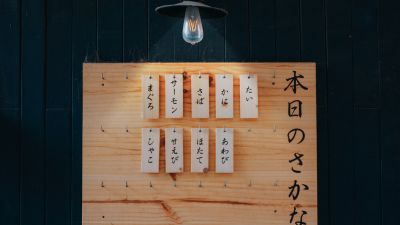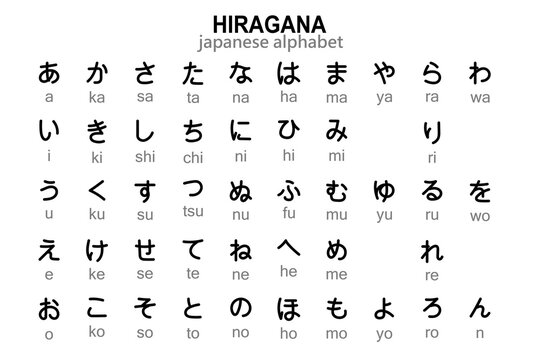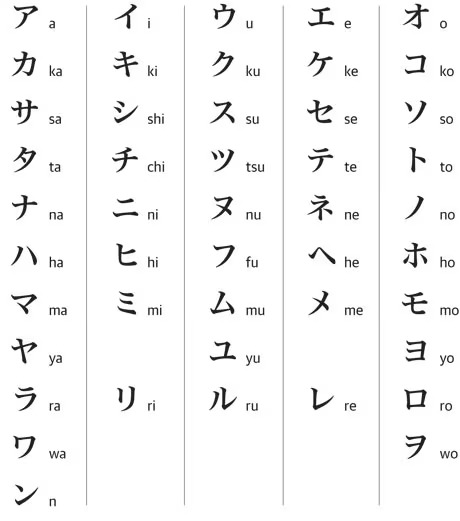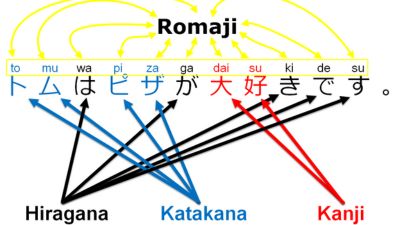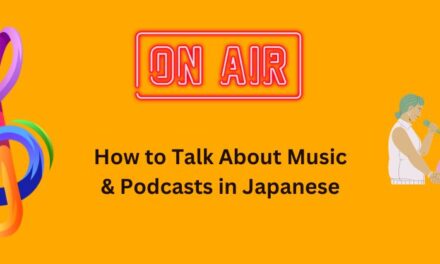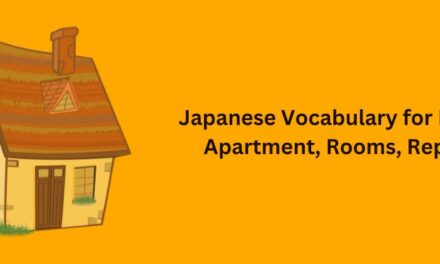Japanese Writing Systems – Learn Kanji, Hiragana, Katakana and Romaji
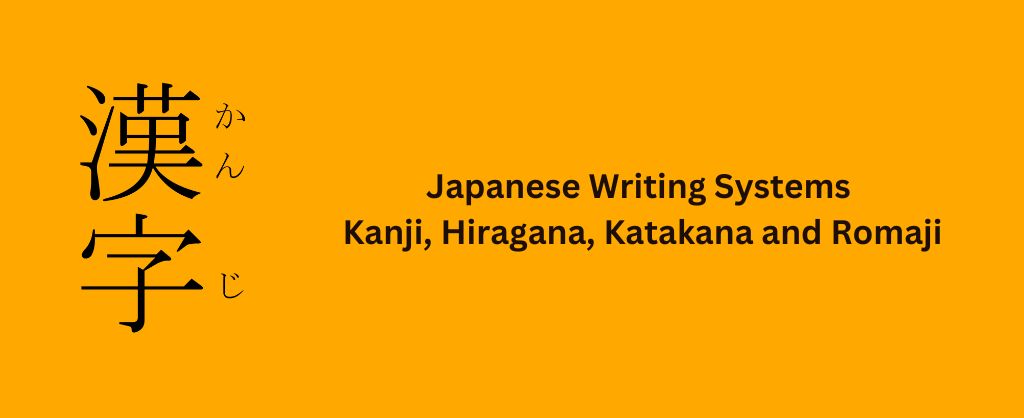
The Japanese language utilizes a combination of writing systems that originated in Japan as well as China.
There are four main scripts used in Japanese writing today: kanji, hiragana, katakana, and romaji. Each serves a different purpose and has its own history and characteristics.
Content
- Japanese Alphabets: Kanji, Hiragana, Katakana, Romaji
- Video Tutorials for Mastering Hiragana and Katakana Alphabets
- How the Scripts Work Together
- Tips for Learning Japanese Writing Systems
- Conclusion
Let’s begin this journey together into the world of Japanese writing!
Kanji – Imported Chinese Characters
Kanji are Chinese characters that were imported to Japan over 1,500 years ago. There are over 50,000 kanji in existence, but only about 2500 are considered for general use and required for literacy in Japanese.
Some key facts about kanji:
- Kanji represent full words or concepts, rather than sounds. For example, 河 represents the word “river”.
- Each kanji has a specific stroke order and direction for writing. Strokes must be written in the correct sequence to form the character properly.
- Kanji have contextual meanings. A single kanji can carry different meanings based on the words it’s paired with.
- Kanji can be combined to form new compound words. For example, 学校 is made up of 学 (study) and 校 (school) to form the word “school”.
- Knowing kanji is critical for reading and writing Japanese beyond a basic level. Mastery takes years due to the large number of characters.
Some common kanji:
人 – person, 山 – mountain, 語 – language, 日 – day/sun, 本 – book, 学 – study
Here’s a short dialogue in Japanese using kanji:
田中: おはようございます!今日はいい天気ですね。- Tanaka: Ohayou gozaimasu! Kyou wa ii tenki desu ne. (Good morning! The weather is nice today, isn’t it?)
山本: はい、昨日は雨だったから、今日の快晴はうれしいです。- Yamamoto: Hai, kinou wa ame datta kara, kyou no kaisei wa ureshii desu. (Yes, since it rained yesterday, it’s nice to have sunny weather today.)
As you can see, kanji are used frequently in combination with the other Japanese scripts. Let’s look at those next.
Hiragana – Native Japanese Syllabary
Hiragana is a syllabic script that represents each sound in the Japanese language. Along with katakana, it is referred to as kana.
Hiragana emerged around the 9th century as a simplified cursive form of kanji used by women, but is now used by all genders.
Hiragana characters:
あいうえお かきくけこ さしすせそ たちつてと なにぬねの はひふへほ まみむめも やゆよ らりるれろ わをん
Some key facts about hiragana:
- There are 46 basic hiragana characters, plus modification characters for elongated vowel sounds.
- Each hiragana character corresponds to a single syllable. For example, か represents “ka”.
- Hiragana is primarily used for native Japanese words or grammatical elements.
- It is the first script taught to Japanese children for reading and writing.
- Words can be written completely in hiragana, or using a mix of kanji and hiragana.
Here’s a hiragana conversation:
わたし: こんにちは、おげんきですか。- Watashi: Konnichiwa, ogenki desu ka. (Hello, how are you?)
あなた: はい、げんきです。きょうはてんきがいいですね。- Anata: Hai, genki desu. Kyou wa tenki ga ii desu ne. (Yes, I’m fine. The weather is nice today, isn’t it?)
This dialogue uses only hiragana and minimal kanji. You can see hiragana is essential for connecting words and conveying grammar.
Learn to read and write hiragana:
Katakana – Phonetic Script for Foreign Words
Katakana emerged alongside hiragana as a simplified version of kanji. While hiragana is used for native words, katakana represents foreign words and names.
Katakana characters:
アイウエオ カキクケコ サシスセソ タチツテト ナニヌネノ ハヒフヘホ マミムメモ ヤユヨ ラリルレロ ワヲン
Key facts about katakana:
- It is pronounced the same way as hiragana but has a more angular appearance.
- Katakana is used for recent loan words, onomatopoeia, foreign names, and scientific terms.
- Word origin is easily distinguished when katakana is used for foreign terms.
- Many loan words from English have been adapted into Japanese using katakana. For example, コンピューター (konpyuutaa) for “computer”.
Here’s a katakana example:
リー: ハロー、ボブ、ハウアユー? – Rii: Haroo, bobu, hau aryuu? (Hello Bob, how are you?)
ボブ: ファインスアンキュー。ナイスウェザーですね。- Bobu: Fain suankyuu. Naisu wezaa desu ne. (Fine thank you. The weather is nice, isn’t it?)
While conversations don’t usually mix languages like this, it shows how katakana adapts foreign words into Japanese.
Learn to read and write katakana:
Romaji – Romanization of Japanese
Romaji is the Roman alphabet (A, B, C…) representation of Japanese writing. It was developed to make Japanese writing understandable by non-Japanese speakers.
Key facts about romaji:
- It directly converts hiragana and katakana into matching Roman letters.
- Accurate pronunciation can be conveyed using romaji, since each character matches a syllable sound.
- Romaji is not considered a Japanese script, but rather a transliteration tool.
- It is primarily used for teaching Japanese, word processing input, traffic signs, or clarifying Japanese words.
- Capitalization and spaces are added to aid readability, since hiragana and katakana do not have those features.
Here’s a conversation in romaji:
Watashi: Ohayou, Bob-san. Ogenki desu ka? (Good morning Mr. Bob. How are you?)
Bob: Genki desu. Tenki ga ii desu ne. (I’m fine. The weather is nice, isn’t it?)
Romaji allows conversation to be understood while also indicating Japanese pronunciation.
How the Scripts Work Together
Now that we’ve looked at each script independently, let’s examine how they function together in Japanese writing and printing:
- Most Japanese texts are written with a combination of kanji and hiragana. Katakana is used as needed for foreign words or names.
- Children’s books rely more heavily on hiragana at first, slowly introducing kanji as literacy improves. Adults continue studying kanji their entire lives.
- Simple sentences may be written entirely in hiragana, but most use a blend of kanji and hiragana. This allows a balance of readability and nuance.
- Scientific documents utilize kanji and katakana for technical vocabulary. Literature may have furigana (hiragana readings above kanji) for rare kanji.
- Electronic and online writing relies more on hiragana due to keyboard limitations. However, kanji are preferred for print when possible.
- Sentence particles like は (wa) and を (o) are almost always written in hiragana, even within kanji-heavy texts.
- Some elements historically written in kanji are now commonly written in hiragana for simplicity, like the verb ending ます (masu).
As you can see, the four scripts work closely together in complementary ways. True mastery of written Japanese requires knowledge of when and how to use each script appropriately.
Tips for Learning Japanese Writing Systems
Here are some helpful tips if you’re starting out with learning Japanese alphabets:
- Focus first on hiragana then katakana. You need to know kana thoroughly before tackling kanji.
- Use mnemonics, flashcards, quizzes, and repetition to commit the kana charts to memory. Associating sounds with characters is key.
- Learn kanji in the context of vocabulary and sentences, not isolated characters. Understanding meaning and usage is important.
- Start with grade 1 kanji required for basics like numbers, dates, family, weather, etc. Grade 2-6 kanji build from there.
- Use spaced repetition apps like Anki to drill kanji alongside meanings. Test yourself often.
- Practice stroke order from the beginning – sloppy strokes become a hard habit to fix later.
- Read children’s books, manga, websites, or news articles written in kana to improve recognition speed.
- Watch variety shows, anime, or dramas to grow accustomed to hearing native speaker pronunciation.
Don’t get discouraged – kana can be learned in a few weeks, but kanji acquisition takes time and routine practice. Patience and persistence will pay off!
Conclusion
In conclusion, the four primary Japanese writing scripts – kanji, hiragana, katakana, and romaji – each play an important and unique role.
Together, they allow complex ideas and foreign concepts to be expressed within the syntax and grammar structures of the Japanese language. Mastering the interplay of these scripts is crucial for achieving Japanese reading and writing fluency.
With the right mindset and tools, the Japanese writing system is fascinating to learn and a rewarding challenge to conquer.

